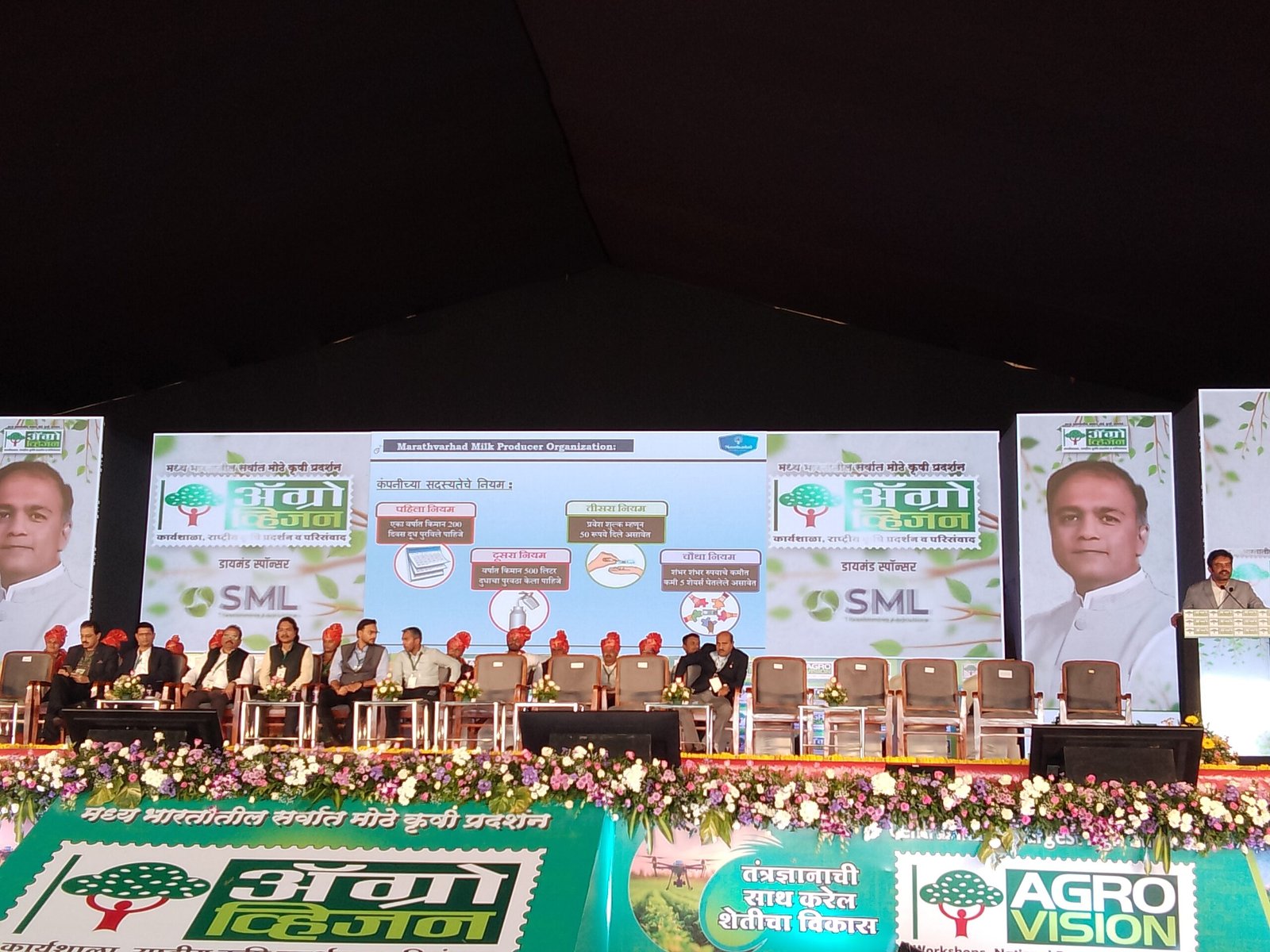Friday, 21 November 2025

Vidarbha’s agricultural narrative—long dominated by citrus, cotton, and oilseeds—is undergoing a structural rebalancing, and dairy has emerged as the region’s most decisive economic equaliser. A sector once viewed as supplementary is rapidly becoming the backbone of rural incomes, driven by women-led producer networks, scientific cattle management, and an institutional push toward feed and fodder security. Together, these forces are recalibrating Vidarbha’s agriculture from a crop-dependent economy to a resilient, circular, and year-round income model. Key dignitaries offering their insights at the session included Dr. S. Gorani, Project Director, VMDDP; Dr. Shivkumar Patil, Marathvarhad MPO; Prof. Sachin Mandavgane, VNIT Nagpur; Dr. Sachin Shankhpal, Manager NDDB; Dr. Sanket Patil, Dy. Manager NDDB; and Dr. A. U. Bikane, Ret. DEE MAFSU, each underscoring dairy’s emerging role as a stabilising force in the region.
At the heart of this transformation is the rising participation of women across the dairy value chain. Over the past decade, women in Vidarbha have moved from the periphery of household livestock care to leading procurement societies, managing milk collection centres, and adopting scientific dairying practices. Their integration into formal dairy systems represents one of the most consequential structural shifts in rural labour. As milk becomes a dependable daily cash flow—unlike seasonal crop earnings—women are increasingly assuming the role of financial custodians within household economies. This empowerment is already reshaping nutritional, health, and educational choices, while strengthening the governance frameworks of dairy cooperatives. The Vidarbha–Marathwada Dairy Development Project (VMDDP) has become a particularly powerful engine of this shift, enabling women to anchor operational logistics and exert greater influence over community-level dairy systems.
Vidarbha’s next leap lies in the widespread adoption of scientific cattle management. The region, like much of India, is transitioning from low-input, low-productivity livestock practices to a more technology-integrated dairy ecosystem. Structured breeding programmes, mastitis-prevention protocols, and digital animal health tracking are now taking centre stage. The addition of Embryo Transfer Technology (ETT) represents a step-change in this evolution: by enabling the production of high-genetic-merit heifers at scale, ETT dramatically accelerates herd improvement cycles that previously took several generations. This technology not only boosts milk yields and disease resistance but also ensures uniformity in herd performance—an essential prerequisite as Vidarbha gears up to supply the upcoming Mother Dairy plant in Butibori, designed for a six-lakh-litre-per-day processing capacity. The simultaneous rise of para-veterinary services, AI-driven breeding advisories, and mobile health-reporting platforms further signals that Vidarbha is moving toward a managed, data-driven dairy architecture capable of supporting industrial-scale processing.
Feed and fodder security—historically one of Vidarbha’s most persistent constraints—is now entering a phase of structural correction. Monsoon variability, shrinking grazing commons, and rising input costs had long curtailed dairy productivity and destabilised farmer incomes. Recent interventions, however, are closing this gap through the development of high-yielding fodder varieties, region-specific silage formulations, and community-run fodder banks. The introduction of two new FTO fodder varieties tailored specifically to Vidarbha’s soil and climatic profile marks a decisive pivot toward scientific fodder stewardship. These advances are balancing feed availability across seasons, lowering the cost of milk production, and enabling a shift from coarse roughage to nutritionally optimised fodder regimes. The forthcoming cattle-feed plant under VMDDP will provide quality-controlled feed at scale, institutionalising these gains and enabling predictable productivity cycles across thousands of dairy households.
Dairy’s rising economic gravity is also attracting significant private-sector and cooperative capital into Vidarbha. Expanding processing capacity, village-level chilling infrastructure, and formal milk-route networks are beginning to correct the structural vulnerabilities that have long defined the region’s crop economy—price volatility, monsoon exposure, and unreliable market linkages. Dairy’s circularity, supported by value-added opportunities in ghee, flavoured milk, paneer, and UHT formats, is opening new entrepreneurial pathways for rural youth and women-led producer groups. Its synergy with fodder cultivation, manure-based biogas, and regenerative soil practices adds a sustainability dimension, making dairy one of Vidarbha’s most future-ready rural industries. As feed systems modernise, genetics improve, and women-led governance strengthens, Vidarbha’s dairy transformation is positioning the region not just for incremental growth but for a complete economic redesign—resilient, climate-aligned, and deeply inclusive.
— Suchetana Choudhury (suchetana.choudhuri@agrospectrumindia.com)